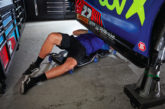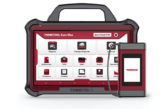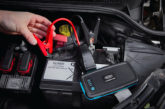
Schaeffler Automotive Aftermarket and VREI e.V. together with 2hm present the most recent findings of the second European study.
With a share of up to 12%, the online trade of automotive spare parts has broken free from its niche existence and has now turned into an established distribution channel – no longer exclusively for Do-it-Yourself customers. For many companies, the online trade and its development have become relevant factors for strategic decision-making within the parts distribution chain.
Representing the interest of 54 leading spare parts manufacturers and automotive suppliers in the open spare parts market, Verein Freier Ersatzteilemarkt e.V. (VREI) in collaboration with Schaeffler Automotive Aftermarket and in cooperation with the market research and consulting agency 2hm & Associates GmbH, have once again conducted an extensive study across the six biggest European countries. As in 2012, the objective was the identification of major developments, players and good flows as well as the analysis of the importance of individual product groups and future price developments in the spare parts online trade.
From the multitude of results and findings, 5 trends stand out:
Trend 1: The online trade keeps growing – but it is losing momentum
While the annual growth rates were in the two-digit range in the period from 2012 to 2015 in almost all European countries, the latest numbers indicate a deceleration of growth dynamics. Across all examined European countries, the growth rates are anticipated to decrease below the 10% threshold until 2018, which suggests a tendency towards saturation. Reasons for this are, among others, the shrinking potential of private customers as well as of “DIY enthusiasts”, due to an increased technical complexity of the vehicles.
Trend 2: The supremacy of eBay Motors is shaky
A renewed sales and turnover analysis of nearly 70 product groups on the still most important player, eBay Motors, proves that actual sales in Germany have decreased compared to 2013. Among the reasons for this are an increasing sales shift of eBay retailers to their own online shops as well as the growing competition from other platform operators such as Amazon. eBay Motors was able to increase its turnover in several other countries, however.
Trend 3: Amazon establishes itself as a serious competitor
With an estimated turnover of 80 to 120 million Euros, generated with automotive spare parts, Amazon is at eye level with big retailers. The majority of the current turnover is generated in the ‘Easy Products’ category (spare parts that can be installed without expertise, e.g. windscreen wipers, lamps, and oils). If Amazon will play an equally big part regarding the classic, more difficult to install automotive spare parts in the future, is uncertain.
Trend 4: Increasing professionalisation of the providers
The majority of providers is past the start-up phases by now and investing heavily in their shops. This is characterised by an increasing internationalisation, diversification of purchasing relationships, professional pricing strategies, and the shift of the core business towards commercial clients such as workshops. By now almost every other online shop presents itself multilingual and offers supplementary services.
Trend 5: Have online price differentials bottomed out?
The price difference between the online and offline channel has further increased in the past three years, to 21% on average. A huge share of market experts assume it has now bottomed out. In light of the market consolidation and the stronger fusion of the online and offline world, a further decline in prices seems questionable.









